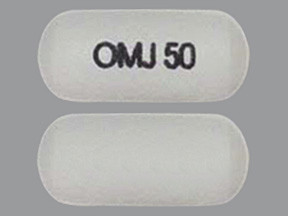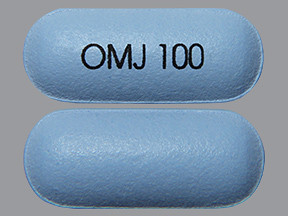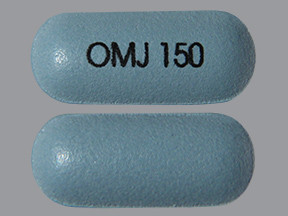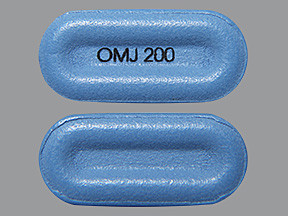TAPENTADOL EXTENDED-RELEASE - ORAL
PHONETIC PRONUNCIATION: (ta-PEN-ta-dol)
COMMON BRAND NAME(S): Nucynta ER
GENERIC NAME(S): tapentadol HCl
Uses
USES: This medication is used to help relieve ongoing severe pain. Tapentadol is an opioid (narcotic) pain reliever. It acts on certain centers in the brain to give you pain relief. Tapentadol may also be used to help relieve nerve pain (peripheral neuropathy) in people with diabetes. Do not use this medication to relieve pain that is mild or that will go away in a few days. This medication is not for occasional ("as needed") use.
How to use TAPENTADOL EXTENDED-RELEASE - ORAL
HOW TO USE: See also Warning section. Read the Medication Guide provided by your pharmacist before you start taking tapentadol and each time you get a refill. If you have any questions, consult your doctor or pharmacist. Take this medication by mouth with or without food as directed by your doctor, usually twice a day (about 12 hours apart). Take this medication on a regular schedule as directed by your doctor, not as needed for sudden (breakthrough) pain. Take this medication with enough water to make sure that you completely swallow the tablet. If you have nausea, it may help to take this drug with food. Ask your doctor or pharmacist about other ways to decrease nausea (such as lying down for 1 to 2 hours with as little head movement as possible). Swallow the tablet whole. Do not crush, break, chew, or dissolve the tablet. Doing so can release all of the drug at once, increasing the risk of side effects. The dosage is based on your medical condition and response to treatment. Do not increase your dose, take the medication more often, or take it for a longer time than prescribed. Properly stop the medication when so directed. Before you start using this medication, ask your doctor or pharmacist if you should stop or change how you use your other opioid medication(s). Other pain relievers (such as acetaminophen, ibuprofen) may also be prescribed. Ask your doctor or pharmacist about using tapentadol safely with other drugs. This medication may cause withdrawal reactions, especially if it has been used regularly for a long time or in high doses. In such cases, withdrawal symptoms (such as restlessness, watering eyes, runny nose, sweating, muscle aches) may occur if you suddenly stop using this medication. To prevent withdrawal reactions, your doctor may reduce your dose gradually. Consult your doctor or pharmacist for more details, and report any withdrawal reactions right away. When this medication is used for a long time, it may not work as well. Talk with your doctor if this medication stops working well. Though it helps many people, this medication may sometimes cause addiction. This risk may be higher if you have a substance use disorder (such as overuse of or addiction to drugs/alcohol). Take this medication exactly as prescribed to lower the risk of addiction. Ask your doctor or pharmacist for more details. Tell your doctor if your pain persists or worsens.
Side Effects
Precautions
Interactions
Overdose
Images
Reviews
Faq for TAPENTADOL EXTENDED-RELEASE - ORAL
Tapentadol extended-release is an oral medication primarily used to treat moderate to severe chronic pain.
Tapentadol extended-release works by binding to opioid receptors in the brain and spinal cord, thereby changing how the body perceives pain.
Common side effects of Tapentadol extended-release may include constipation, nausea, vomiting, dizziness, drowsiness, headache, and dry mouth.
Tapentadol extended-release has the potential to be habit-forming if used for long periods or in high doses. It is important to take the medication as prescribed and to follow your doctor's instructions.
It is generally not recommended to consume alcohol while taking Tapentadol extended-release as it may increase the risk of side effects such as drowsiness, dizziness, and difficulty breathing. It is best to consult with your healthcare provider regarding alcohol use.
If you miss a dose of Tapentadol extended-release, take it as soon as you remember. However, if it is close to the time of your next scheduled dose, skip the missed dose and continue with your regular dosing schedule. Do not double the dose to make up for a missed one.
It is important to inform your doctor about all the medications you are currently taking, including over-the-counter medications, supplements, and herbal remedies. Your healthcare provider can determine if Tapentadol extended-release can be safely used in combination with other pain medications.
Warning
WARNING: Tapentadol has a risk for abuse and addiction, which can lead to overdose and death. Tapentadol may also cause severe, possibly fatal, breathing problems. To lower your risk, your doctor should have you take the smallest dose of tapentadol that works, and take it for the shortest possible time. See also How to Use section for more information about addiction. The risk for severe breathing problems is higher when you start this medication and after a dose increase, or if you take the wrong dose/strength. Taking this medication with alcohol or other drugs that can cause drowsiness or breathing problems may cause very serious side effects, including death. Be sure you know how to take tapentadol and what other drugs you should avoid taking with it. See also Drug Interactions section. Get medical help right away if any of these very serious side effects occur: slow/shallow breathing, unusual lightheadedness, severe drowsiness/dizziness, difficulty waking up. Do not crush, break, chew, or dissolve this medication. Also, do not drink alcohol or use any product that contains alcohol while taking this medication. Drinking alcohol with this medication or taking crushed, broken, chewed, or dissolved forms of extended-release tapentadol could cause serious (possibly fatal) overdose. Keep this medicine in a safe place to prevent theft, misuse, or abuse. If someone accidentally swallows this drug, get medical help right away. Before using this medication, women of childbearing age should talk with their doctor(s) about the risks and benefits. Tell your doctor if you are pregnant or if you plan to become pregnant. During pregnancy, this medication should be used only when clearly needed. It may slightly increase the risk of birth defects if used during the first two months of pregnancy. Also, using it for a long time or in high doses near the expected delivery date may harm the unborn baby. To lessen the risk, take the smallest effective dose for the shortest possible time. Babies born to mothers who use this drug for a long time may develop severe (possibly fatal) withdrawal symptoms. Tell the doctor right away if you notice any symptoms in your newborn baby such as crying that doesn't stop, slow/shallow breathing, irritability, shaking, vomiting, diarrhea, poor feeding, or difficulty gaining weight.
Disclaimer
IMPORTANT: HOW TO USE THIS INFORMATION: This is a summary and does NOT have all possible information about this product. This information does not assure that this product is safe, effective, or appropriate for you. This information is not individual medical advice and does not substitute for the advice of your health care professional. Always ask your health care professional for complete information about this product and your specific health needs.





No Reviews Yet